April 7th 2016 Officially Growing The Summer Garden (Page One)
Most of the winter (The English word "winter" comes from the Proto-Indo-European word "Wend", that stood for water.) crops are gone and have been replaced with traditional summer crops.
The weather has been nice so we are seeing the growth of the plants almost on a daily basis. Join the tour!

We spend an hour a day in the garden just doing "contenttenance". The new raised garden really saves a load of time! No crawling on hands and knees...
Raised garden beds, also called garden boxes, are great for growing small plots of veggies and flowers. They keep pathway weeds from your garden soil, prevent soil compaction, provide good drainage and serve as a barrier to pests such as slugs and snails. The sides of the beds keep your valuable garden soil from being eroded or washed away during heavy rains. In many regions, gardeners are able to plant earlier in the season because the soil is warmer and better drained when it is above ground level.
By raising the soil level, raised garden beds also reduce back strain when bending over to tend the bed. This is especially helpful to older gardeners or people with bad backs (read Paul and Sue). Our beds are built well so we can sit on the edge of the bed while weeding and trimming and fertilizing the various plants.
But before we see the garden, we must ask ourselves the age-old question: Why did the grape stop in the middle of the road? Because he ran out of juice.

Paul and his little friend are always in the garden!

Click for the full sized image


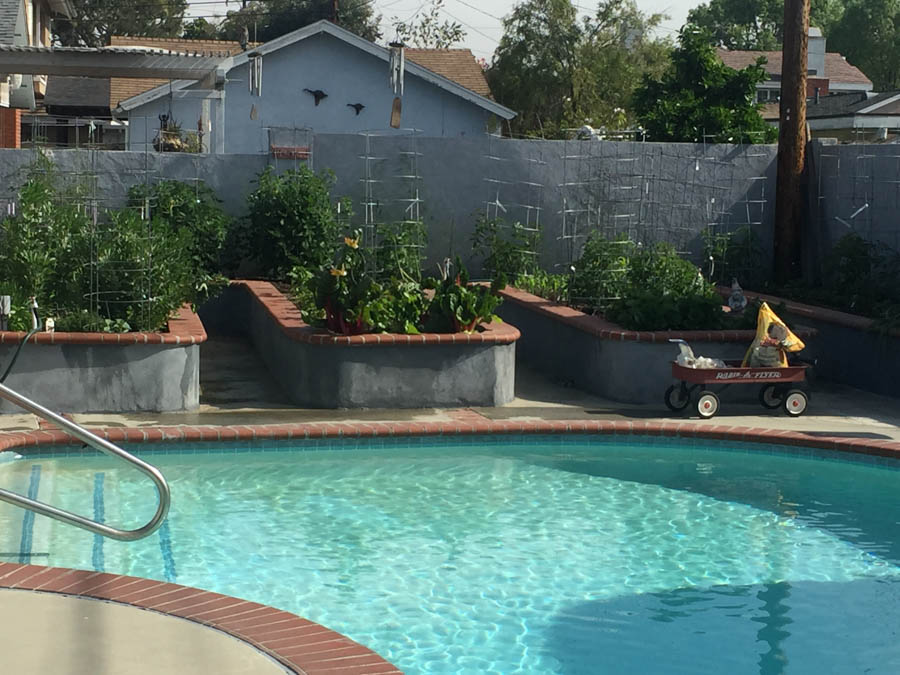
The newly designed yard is working out well. Paul can pull the little red wagon
up and down the aisles
loaded with tools, fertilizers, and seeds/plants!
The wagon keeps us from making multiple trips

Cherish indeed...


6 x 8 planting of corn should assure proper pollination
( Read about Corn Pollination )
Not quite as high as an elephants eye but we are working on it!

We must remember to keep the corn well watered!
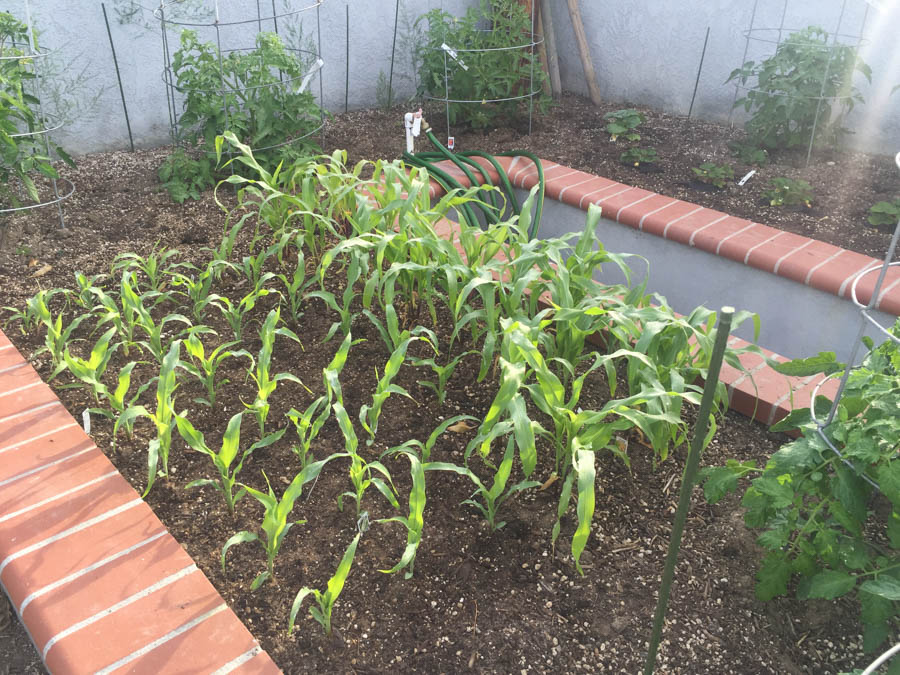
Yellow and white corn....
We mix it up and do NOT detassel... Huh?
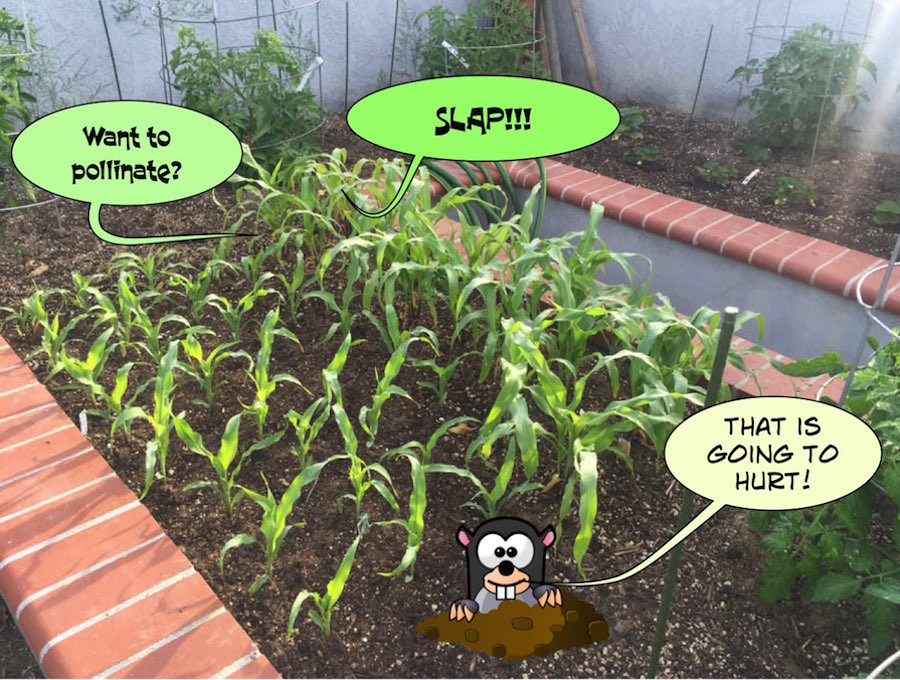
Checkout our "Adults Only" pollination page
Did You Know? - De tasseling corn is removing the pollen-producing flowers, the tassel, from the tops of corn (maize) plants and placing them on the ground. It is a form of pollination control, employed to cross-breed, or hybridize, two varieties of corn.
Fields of corn that will be detasseled are planted with two varieties of corn. Every corn plant has both male and female parts, so if both varieties of corn were left intact, some of the resulting seeds would have non-hybrid parents. Removing the tassels from all the plants of one variety leaves the grain that is growing on those plants to be fertilized by the tassels of the other, resulting in a hybrid.
In addition to being more physically uniform, hybrid corn produces dramatically higher yields than corn produced by open pollination. With modern seed corn the varieties to hybridize are carefully selected so that the new variety will exhibit specific traits found in the parent plants. The detasseling process usually involves the use of both specialized machines and human labor.

Yes.... This year we have 32 different types of tomatoes!

The tomatoes have to be stuffed back into their cages every few days!
Did You Know? - The poor taste and lack of sugar in modern garden and commercial tomato varieties resulted from breeding tomatoes to ripen uniformly red. This change occurred after discovery of a mutant "u" phenotype in the mid 20th century that ripened "u"uniformly. This was widely cross-bred to produce red fruit without the typical green ring around the stem on uncross-bred varieties. Prior to general introduction of this trait, most tomatoes produced more sugar during ripening, and were sweeter and more flavorful.
We do heirlooms. Heirloom tomatoes have become increasingly popular and more readily available in recent years. According to tomato experts, heirloom tomatoes can be classified into four categories: family heirlooms, commercial heirlooms, mystery heirlooms, and created heirlooms. They are grown for a variety of reasons, such as historical interest, access to wider varieties, and by people who wish to save seeds from year to year, as well as for their taste, which is widely perceived to be better than modern tomatoes.

The tomatoes are only a month old and are doing quote well.... Behind the
tomatoes are twenty-one asparagus plants which will produce next year!

The tomatoes are almost four feet tall already!

The tomatoes look so healthy! This is the critical time... Must watch carefully
to keep blossom rot from occurring
Did You Know? - Calcium (Ca) deficiency is a plant disorder that can be caused by insufficient calcium in the growing medium, but is more frequently a product of low transpiration of the whole plant or more commonly the affected tissue. Plants are susceptible to such localized calcium deficiencies in low or non transpiring tissues because calcium is not transported in the phloem. This may be due to water shortages, which slow the transportation of calcium to the plant, poor uptake of calcium through the stem, or too much nitrogen in the soil.

Asparagus takes 3-4 years to start producing edible fruit... This is our third year
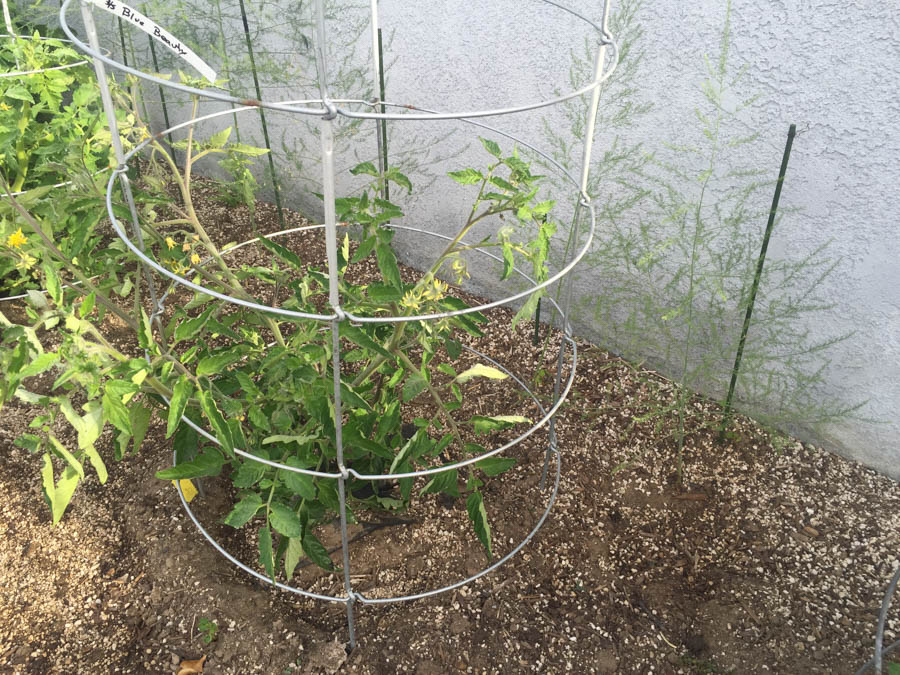
See the asparagus in the back behind the tomatoes?
The "ferns" will transfer
energy to the plants roots which form the asparagus shoots for next year
Did You Know? - Asparagus has been used as a vegetable and medicine, owing to its delicate flavor, diuretic properties, and more. It is pictured as an offering on an Egyptian frieze dating to 3000 BC. In ancient times, it was also known in Syria and in Spain. Greeks and Romans ate it fresh when in season, and dried the vegetable for use in winter; Romans even froze it high in the Alps, for the Feast of Epicurus. Emperor Augustus created the "Asparagus Fleet" for hauling the vegetable, and coined the expression "faster than cooking asparagus" for quick action.


Fresh strawberries every morning
... When they get started they produce for two months!

Hide and seek with the strawberries is a great game!!

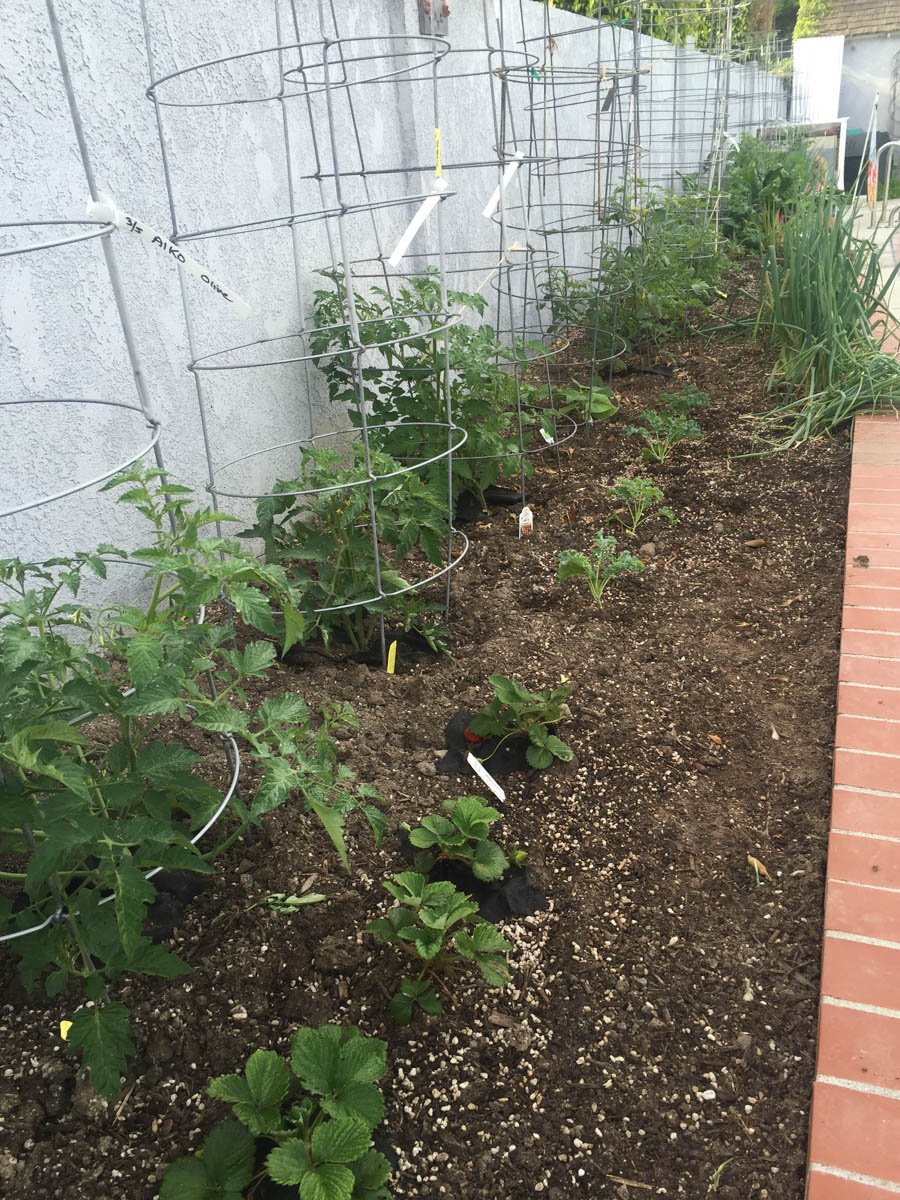
Kale in the foreground
and 13 different cherry tomatoes along the eastern fence


Another month or so and we will have fresh kale all summer...
and kale chips!
"Every leaf of kale your chew adds another stem to
your tree of life." Ancient Turkish Saying

Four string bean plants will feed us all summer

He He... Just see if you are paying attention
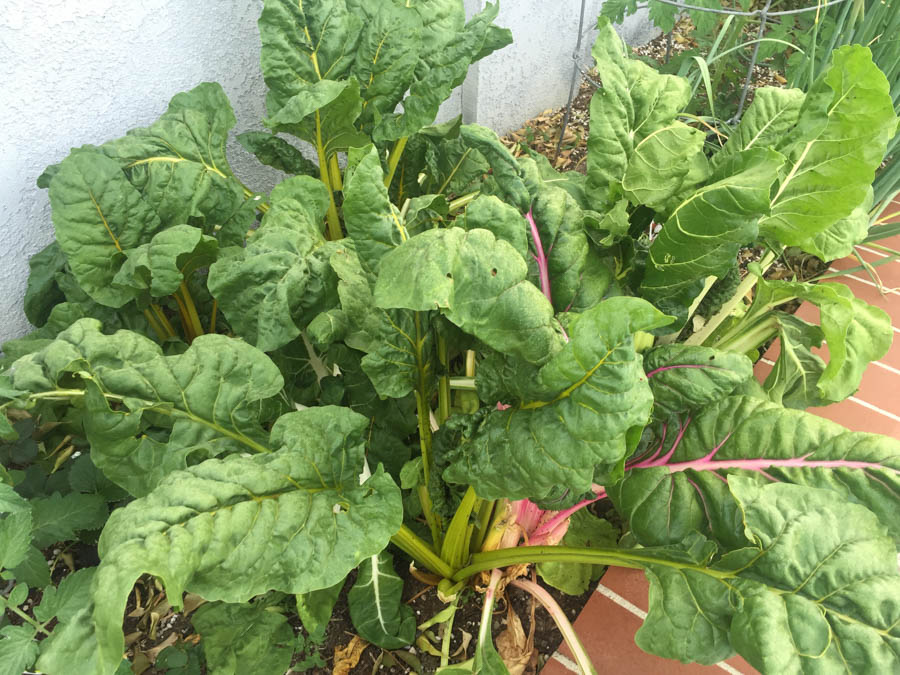
Swiss chard growing like a weed! We trim these one a month and it makes for
several days of excellent meals!
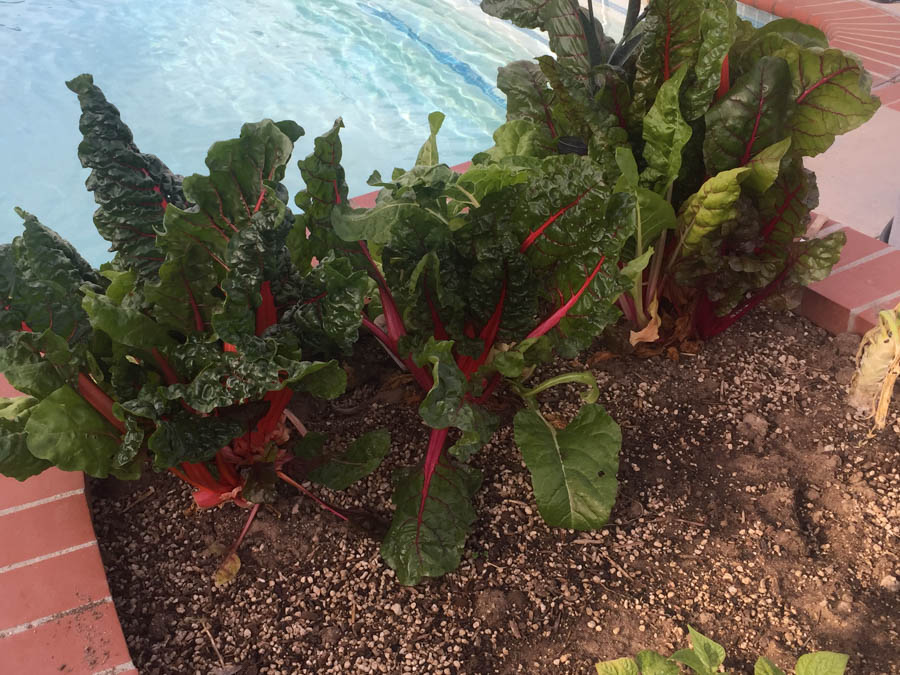
We plants carrots, radishes, and beets behind the Swiss Chard

A beautiful plant
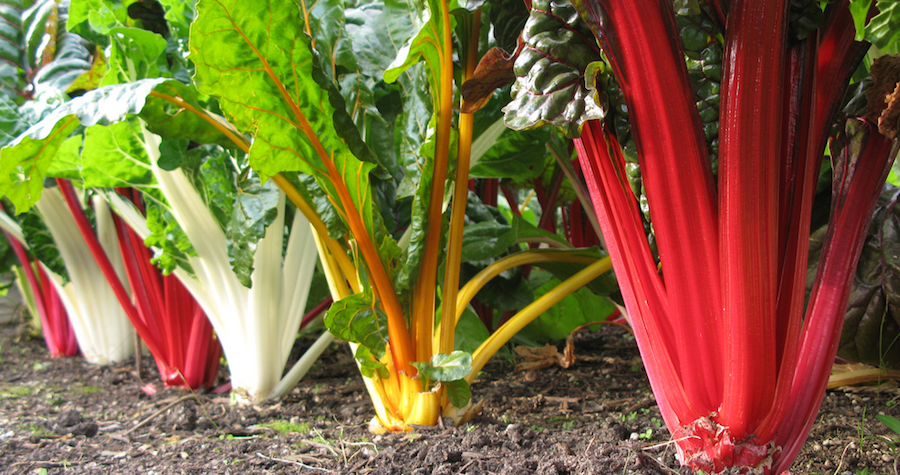
The worms eye view reveals red, white, and "rainbow" varieties

We just cooked up a mess of Swiss Chard this past week! It is a beautiful
and very easy to containment plant!

When we need onions, we walk outside and pull what we need!
The Garden Gnomes keep a sharp eye out
Did You Know? - Garden gnomes, believe it or not, are not the product of a 20th century lapse in good taste, as their garishly colored clothing and smiling countenances may indicate, but rather an 19th century one.
In the second half of the 1800s, German sculptor and potter Phillip Griebel started a business molding ceramic into lifelike busts of animals, a fashionable home and garden decoration at the time. Inspired by the gnome myths of his home (Gräfenroda, Thuringia), he began fashioning small, pointy-hatted ceramic gnomes for gardens; the first gnome went to market in Leipzig in 1884 and was an instant success.
Production was halted during World War II, and following the fall of the Nazis, garden gnomes were banned briefly as the German Democratic Republic rose to power in East Germany. Still, the gnomes managed to pull through and Griebel's garden gnome dynasty exists even now, although in a much diminished capacity, owing to the cheap labor and even cheaper materials coming out of China and Eastern European markets.
garden-gnomes.jpg
Nowadays, garden gnomes can be found in a wide variety of attitudes and poses: Reclining on one elbow, smoking a pipe; fishing with a wee fishing rod; standing proudly, hands on hips; pushing a wheelbarrow; or holding open his robes to reveal his naughty bits.

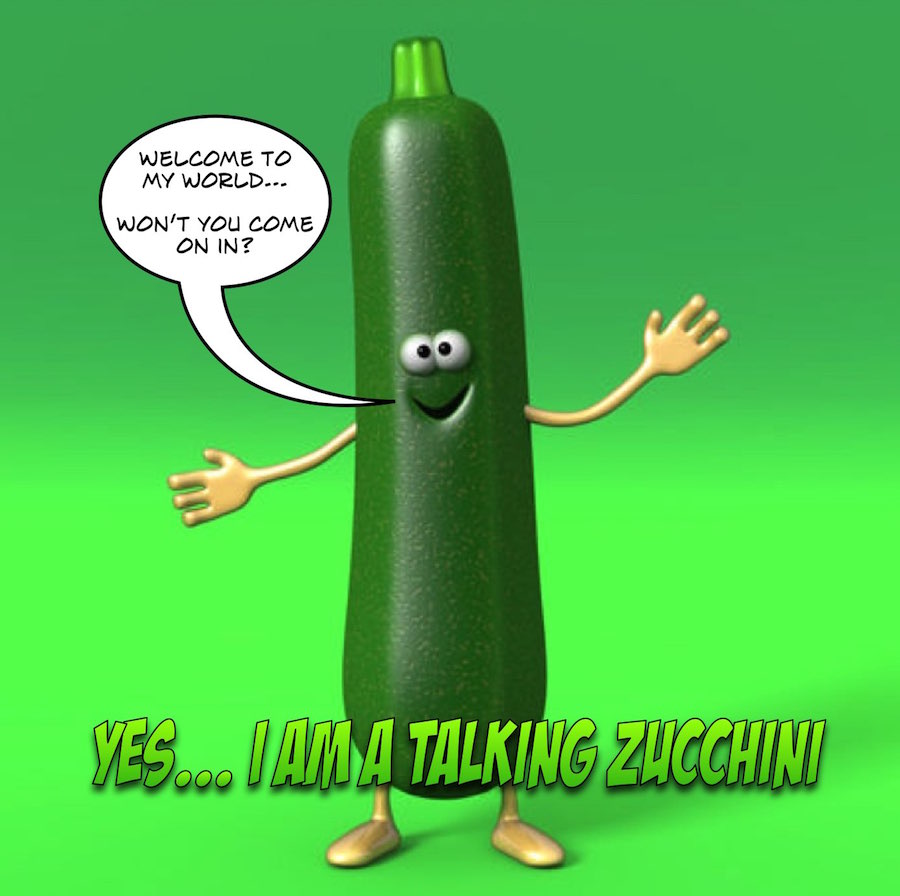
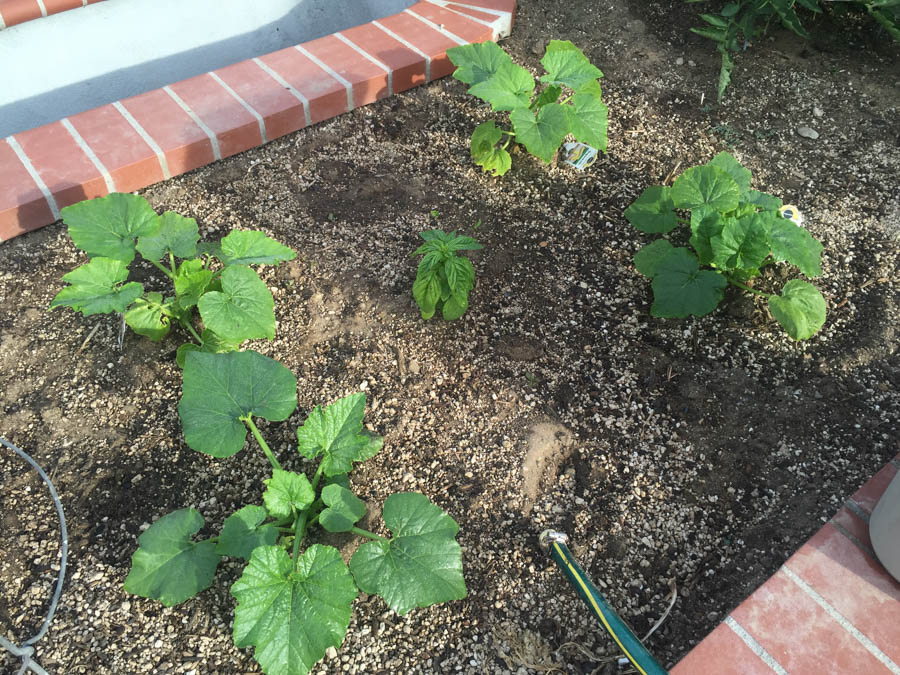
Four zucchini and squash plants... The plant in the center is
basil... The basil will draw the bee's to the zucchini and squash
and they need bees
to pollinate

The basil has a big job to do!
No bees no zucchini!
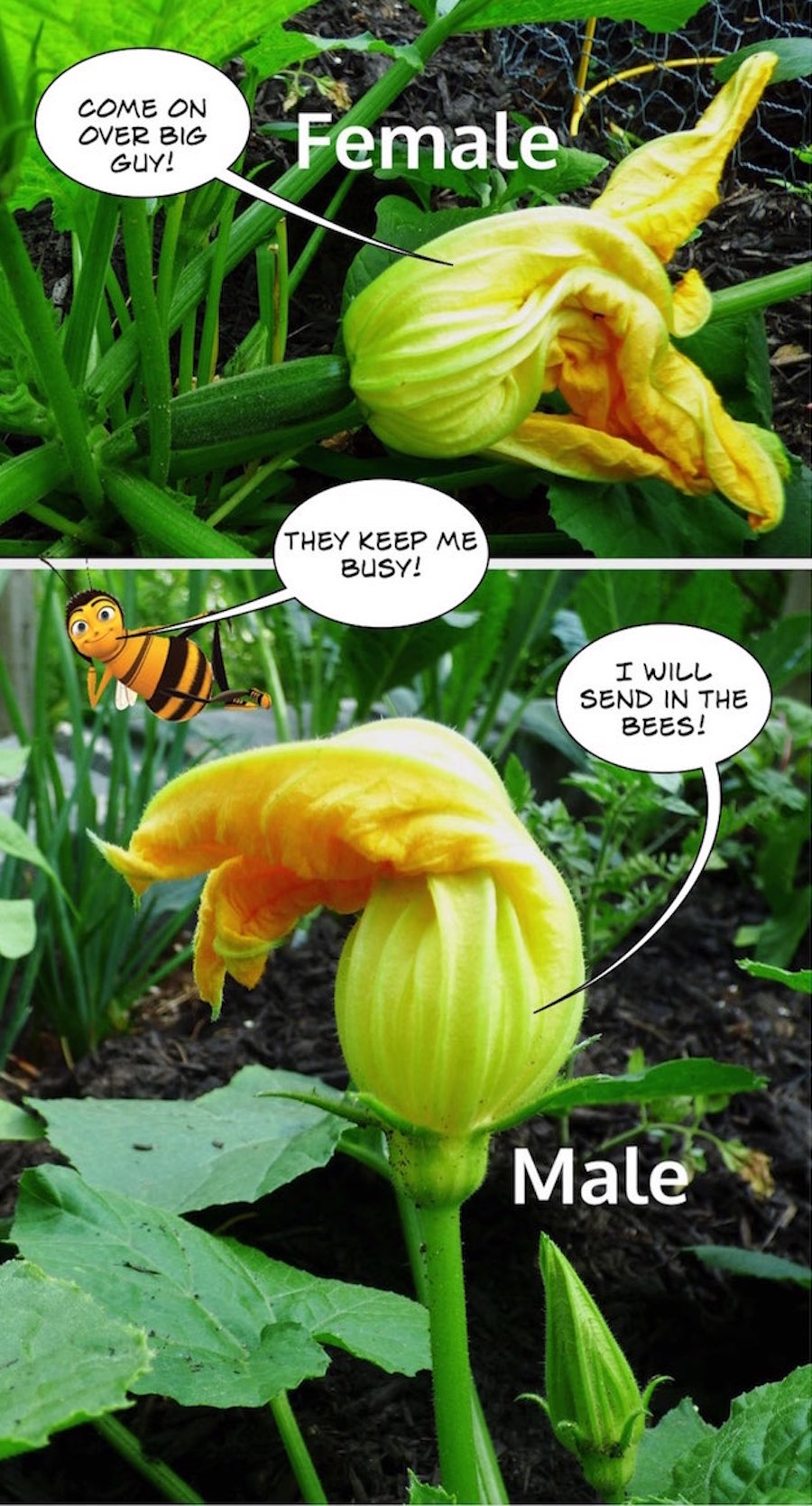
Seriously... Look under the female blossom for the baby zucchini!
Under the male blossom there is no zucchini forming...
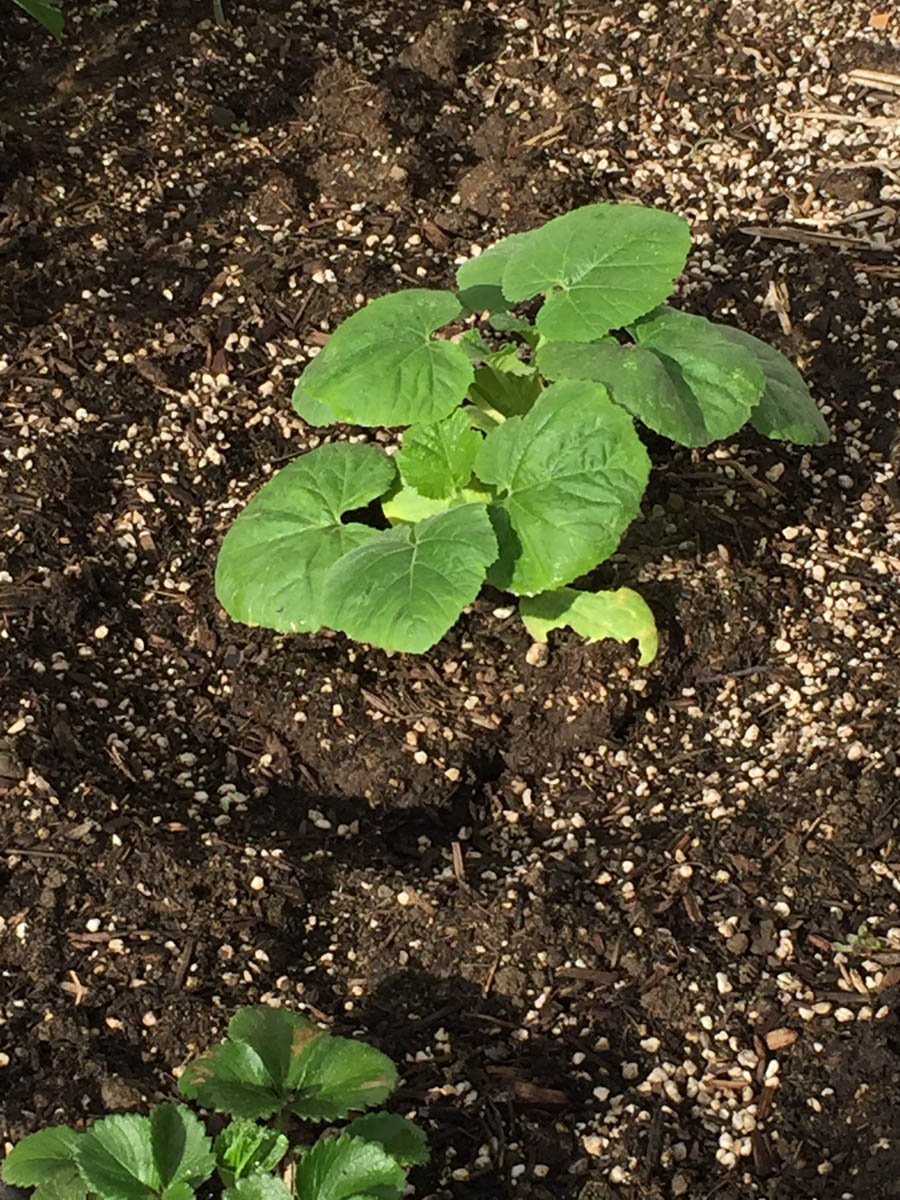
Spaghetti Squash will get huge


We grow Bells, Jalapeño, Scotch Bonnets, Habaneros, Poblanos, and several others!
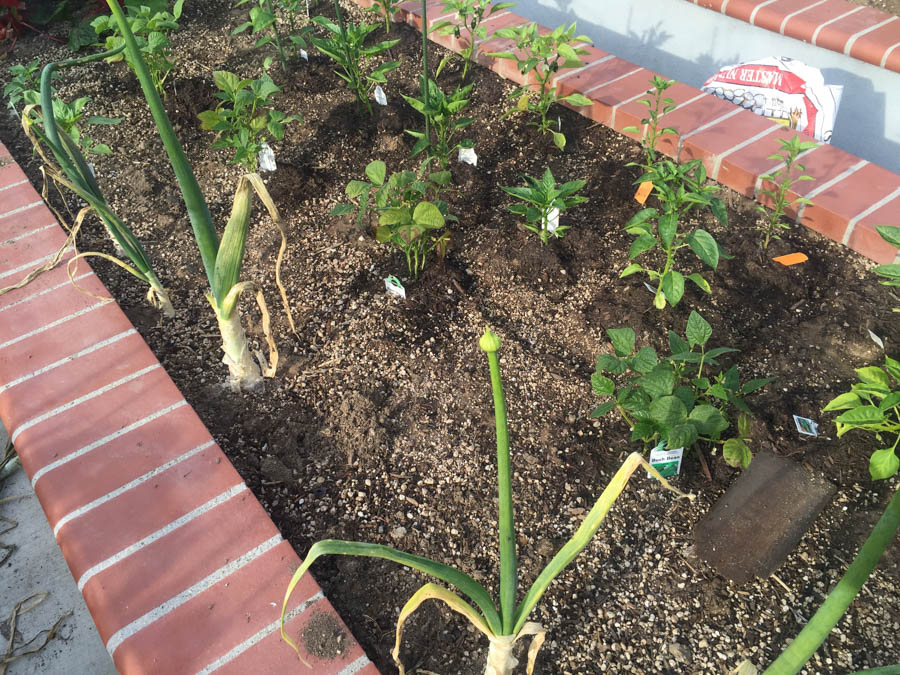
Pepper and onions everywhere...
The peppers are already forming if you look closely

The walk ways in the new garden make it so easy to garden! No weeds here!

The peppers are popping out already... This is an Anaheim Chili that in a month or
so will be stuffed with Sue's famous veggie pepper stuffing!


Do you see the tiny green beans? This is a bush bean and went properly picked
will produce for a couple of months... You must pick every other day!
Did You Know? - There are many kinds of beans and we have, over the years, grown many of them!
Bush types
Bountiful, 50 days (green, heirloom)
Burpee's Stringless Green Pod, 50 days (green, heirloom)[4]
Contender, 50 days (green)
Topcrop, 51 days (green), 1950 AAS winner
Red Swan, 55 days (red)
Blue Lake 274, 58 days (green)
Maxibel, 59 days (green fillet)
Roma II, 59 days (green romano)
Dragon's Tongue, 60 days (streaked)
Jade / Jade II, 65 days (green)
Pole types
Blue Lake, 60 days (green)
Fortex, 60 days (green fillet)
Kentucky Blue, 63 days (green), 1991 AAS winner
Old Homestead / Kentucky Wonder, 65 days (green, heirloom)
Rattlesnake, 72 days (streaked, heirloom)
Purple King, 75 days (purple)
Witsa, 70-80 days (green, hairless).

I'll a little basil short and shout...
DO NOT pull me out!
Did You Know? - Common Basil (Ocimum basilicum) is an aromatic herb with light green leaves. There are several other basil species and numerous horticultural varieties including: purple basil, opal basil, lime basil, lemon basil, anise basil, cinnamon basil and clove basil.
Although Basil is cultivated worldwide, Egypt is the principal source followed by the United States.
Basil is Greek for 'royal' or 'kingly'. Ancient Greek and Roman doctors believed that basil would grow only if its cultivators sowed the seeds while screaming wild curses and shouting unintelligibly.
The Greeks believed that only the sovereign himself, armed with his golden sickle, should be allowed to cut the basil.

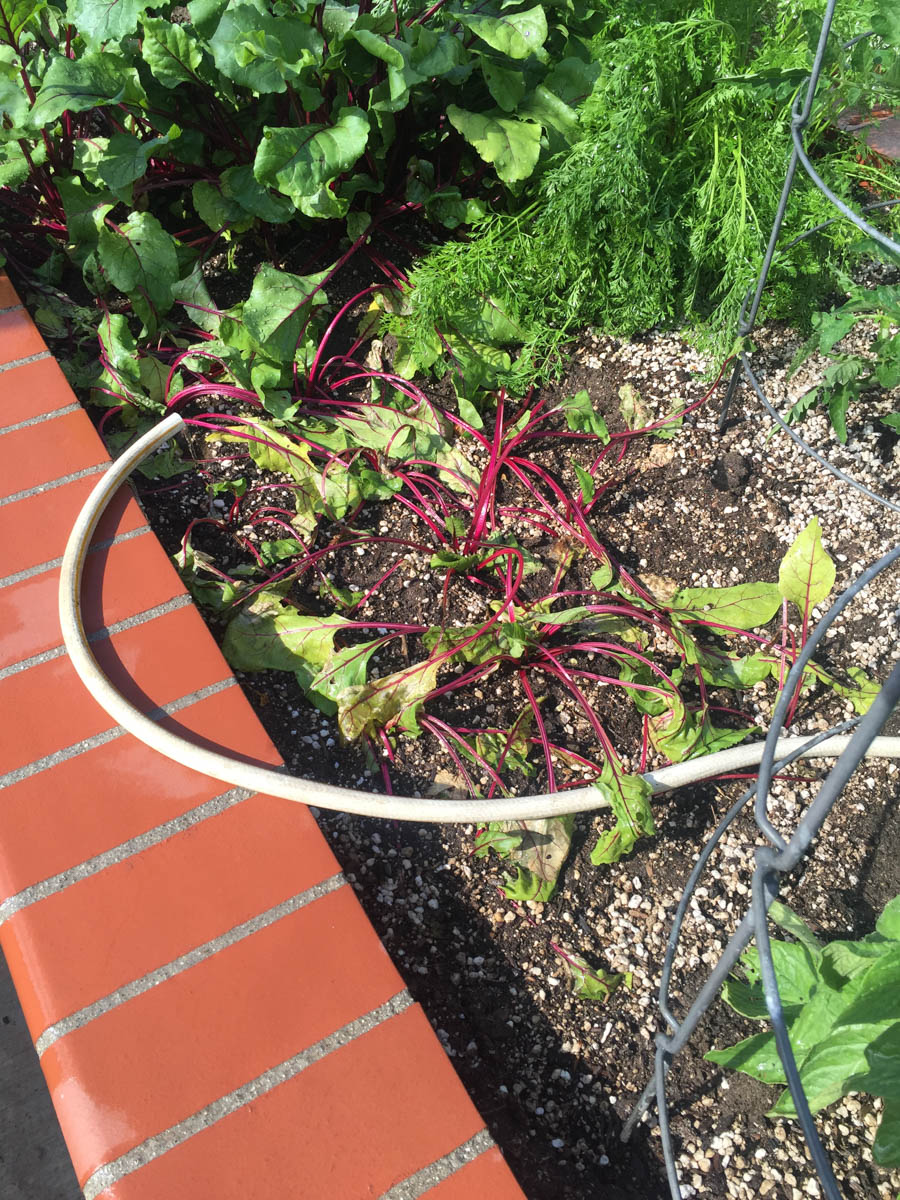
Sad right now... We transplanted the little guys yesterday...
Give them a few more days and they will perk right up.... It's a shocking experience!!

Two days later and they are standing up

We pulled the transplanted beets form these mature beets...
The big guys will be roasted in aluminum foil and are delicious! Sweet


Almost ready to pick...
The fava beans are doing well

They are a beautiful plant... Always look so healthy
Did You Know? - The fava bean (Vica faba) also known as faba bean, horse bean and broad bean, was the only bean known in Europe until the discovery of the New World.
The name 'broad bean' refers to the seeds, which are large and flat.
Recontents of beans are reported to have been found in Egyptian tombs.
The 6th century B.C. philosopher Pythagoras condemned the fava bean and would not let his followers eat it. It was thought that they contained the souls of the dead.
The cultivation of fava beans is so old that there is no known wild form of this bean. It has been used in Chinese cooking for at least 5,000 years.

We put some herbs at the end of the garden which is right
outside the kitchen... Perhaps saving a few steps

Looks so pretty in the morning sun!

We calls him "THE LONE CABBAGE"
... He survived the
St. Patrick's Day massacre..

Underneath the dirt by 1/2 inch are beets, carrots, and radish seeds
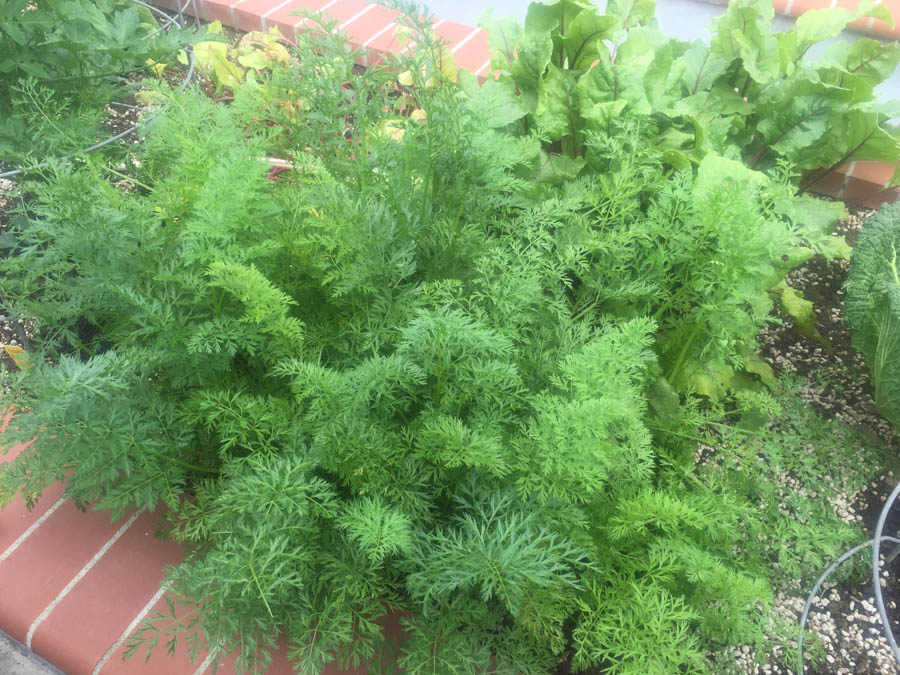
Carrots? Well, indeed!

The east wall is in the shade until about 11:00 am


Lined up and ready to give

The blue berries are getting ready to produce...
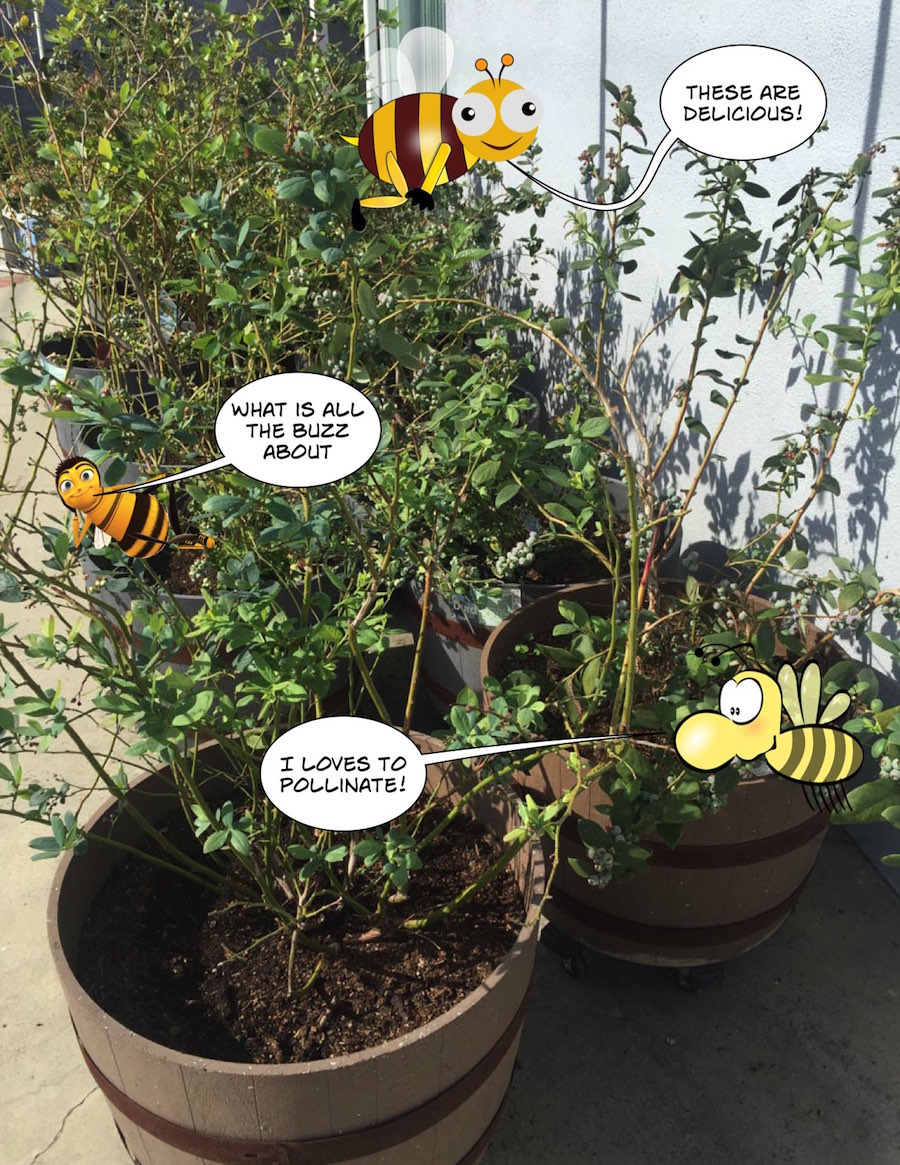

We have blue berries every morning for months

We will be picking in 30 days! We have them on individual rollers so it the
sun gets too hot, we can roll them into a shaded area!

An amazing amount of berries come from these ten little guys
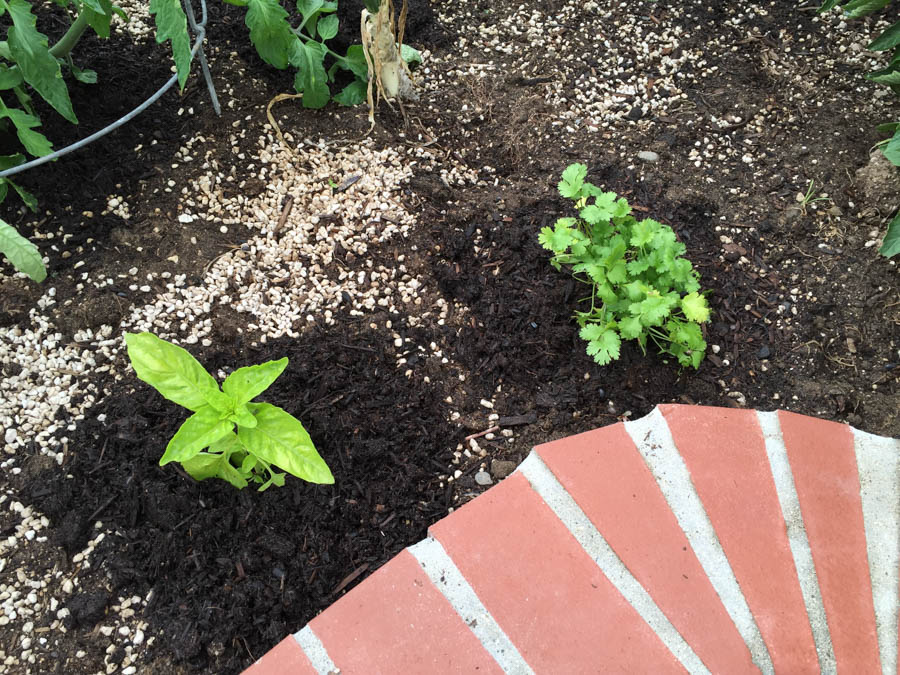
Basil and Cilantro dot the garden in many location
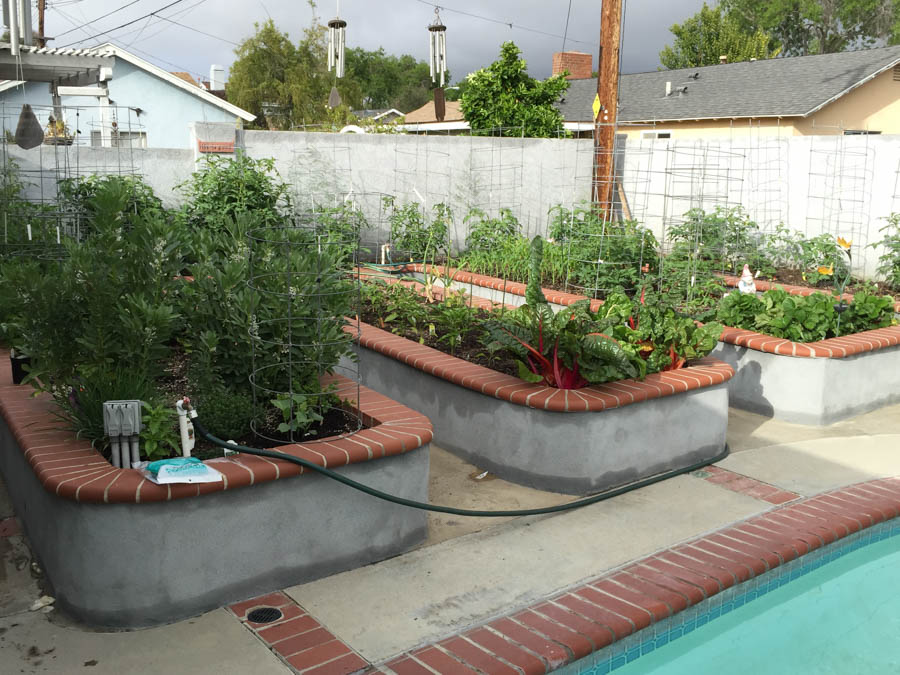
Looks so good after a bit of rain
